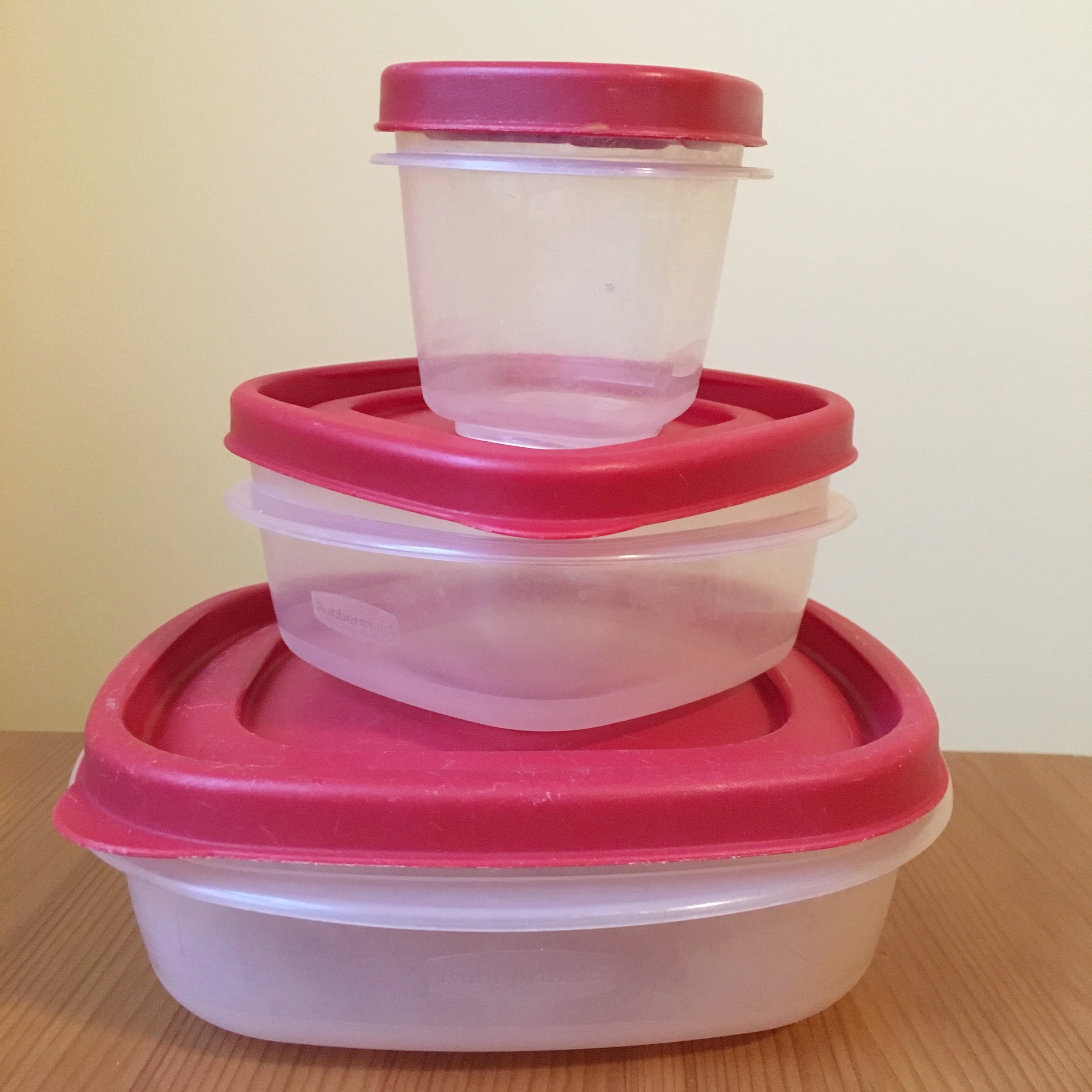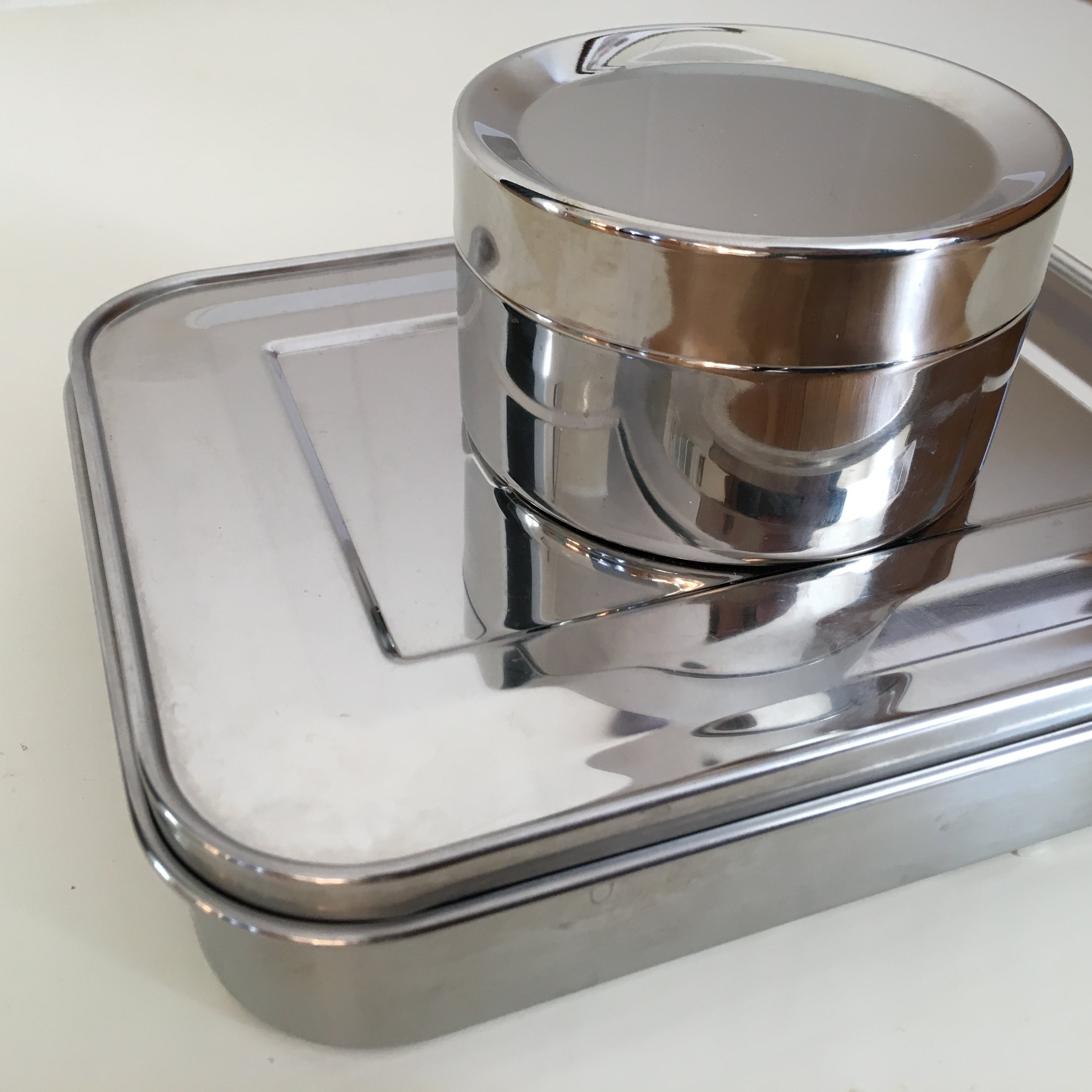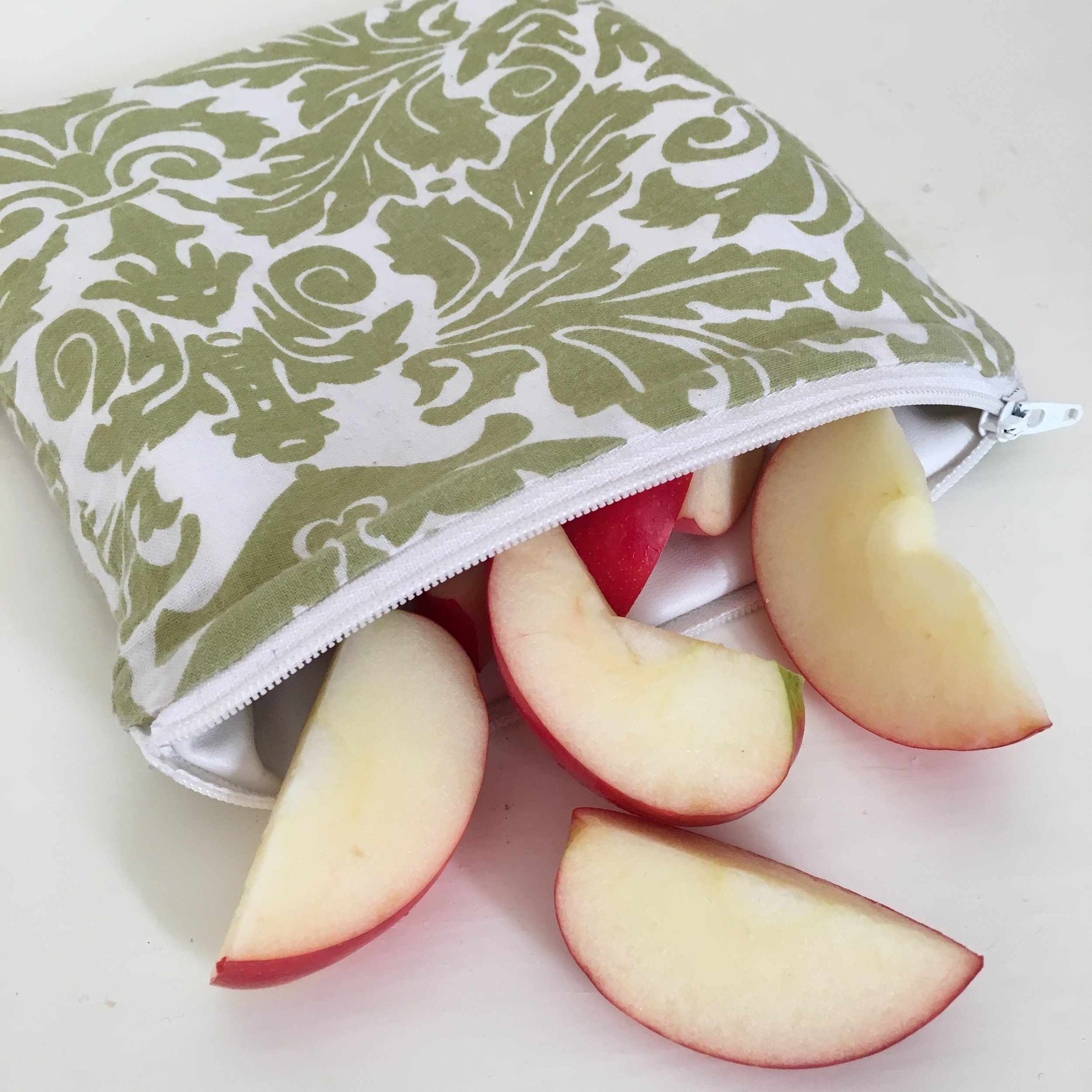Food Storage Basics
Preventing food waste is important but so is preventing waste from storing food. Plastic wrap, aluminum foil and zip-top bags often end up in the landfill after one use. These single-use products are not only a waste of money, but also a waste of precious kitchen real estate, resources and more. We have better alternatives than these trashy one-time-use items. Most, of which, you likely own already!
USE CONTAINERS YOU ALREADY OWN. It’s surprising how often people reach for Ziploc bags over reusable containers. These zero waste options are likely to already be in your home...
- Rigid Plastic Containers (Gladware, Rubbermaid, Tupperware, etc.): We all have some, right? Just avoid heating food in them for safety reasons and invest in non-plastic alternatives when the time comes.
- Glass & Ceramic Baking Dishes (Corningware and Pyrex): A great non-plastic option for storing larger portions (such as holidays & entertaining) as well as easy, everyday oven-to-table-to-fridge storage. Leftovers can safely be reheated in them too.
- Dishtowels & Cloth Napkins: Cloth is a forgotten storage gem! Simply wrap or drape food. If necessary, dampen the cloth to keep food moistened. (Lettuce stores especially well in a damp cloth. Simply wrap freshly washed lettuce in a towel and store in the fridge!)
- Glass Jars: Perfect for chilling, freezing, cooking and reheating food. Rescue food jars headed for the recycle bin or use canning jars.
- Packaged Food Containers: When packaging can’t be avoided, choose food in containers that can be reused as storage after eating the contents. Glass is preferred because it doesn’t absorb flavors or release chemicals and is recyclable. Some glass containers that are great for reuse are pasta sauce jars, juice bottles, and salad dressing bottles.
- Bowls, Plates & Cups: Get resourceful! Use a plate as a lid on top of a bowl, invert a plate on top of another or leave food on an open plate. Even cups and mugs can be used to store fresh herbs like a flower arrangement.
- Nothing: Not using any container might work just fine. This works for foods like onion- and shallot-halves that will be used up before drying out.
INVEST IN REUSABLE PRODUCTS. Every single-use product has a reusable alternative. Consider these solutions for specific needs...
- Waxed Cloth Wrap: This popular alternative to plastic wrap is usually made of food-safe beeswax. Although it’s more costly upfront than plastic wrap, waxed wrap is a great investment with the money saved by ditching disposables! To use it, place on foods, bowls or plates as you would with plastic wrap and then mold the wrap using the heat from your hands. To clean, scrub with soap and water.
- Cloth Bags: Cloth bags are invaluable in a zero waste home! Use on-the-go for carrying meals or snacks (whole pieces of fruit, veggies, crackers, chips, popcorn, cookies, nuts & seeds, sandwiches, etc.). Also, use for bringing dry bulk good home from the store.
- Snack & Sandwich Pouches: These space-efficient pouches usually have a water-resistant lining (aka plastic!) and are sealed with zippers or buttons. For these reasons, they are handy for on-the-go storage of wet or oily food as well as non-food items like cloth wet wipes.
- Fabric Bowl Covers: Like a shower cap stretched around the tops of bowls, they are great space-savers compared to rigid lids.
- Stainless Steel Containers: A pricey but shatter-proof alternative that comes in all shapes, sizes and configurations. Some have compartments like Bento boxes while others are single containers that stand alone or can be stacked together.
- Various Glass Containers: For more specific purposes, shop your local resale shop for beautiful and functional glass containers. Places like ARC’s Value Village carry many reusable containers including countertop canisters, Mason jars, swing-top bottles and hermetic canning jars.
REFUSE UNNECESSARY ITEMS. The market is full of items intended for convenience that actually waste our time and potentially hold long-term consequences. Consider the options above before purchasing new products like plastic containers (health & safety concerns), squeeze pouches (limited uses), silicone lids (not recyclable, compostable, or repairable), and so on. Remember to pace yourself on your journey toward zero waste and refuse what you do not need.
RECOMMENDED READING
- Waste-Free Kitchen Handbook: A Guide to Eating Well and Saving Money By Wasting Less Food by Dana Gunders
- Save the Food: www.savethefood.com
- The Ugly Fruit & Veggie Campaign: www.endfoodwaste.org/













